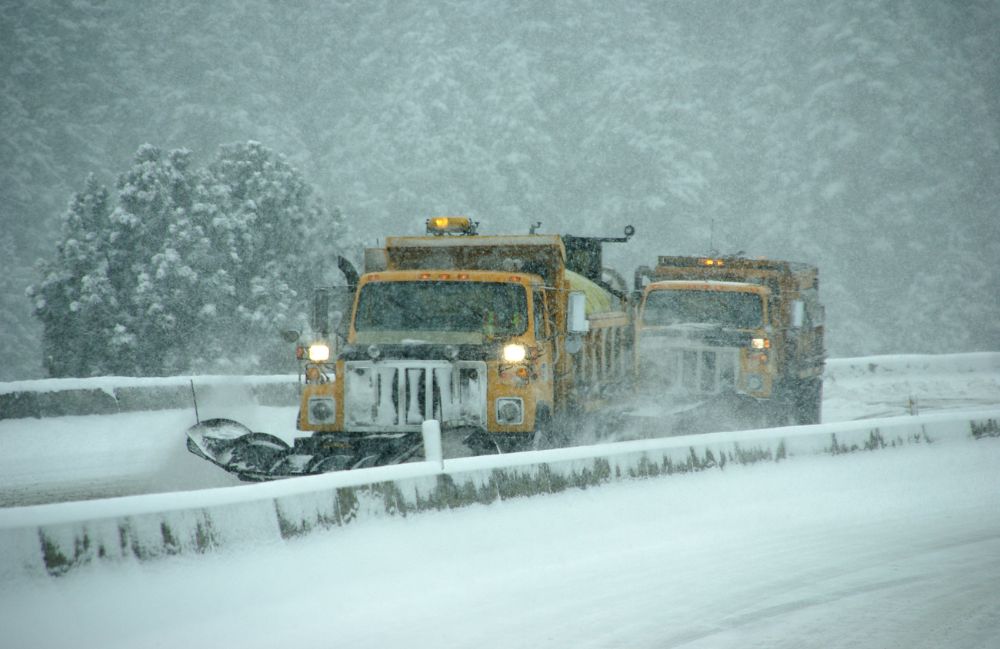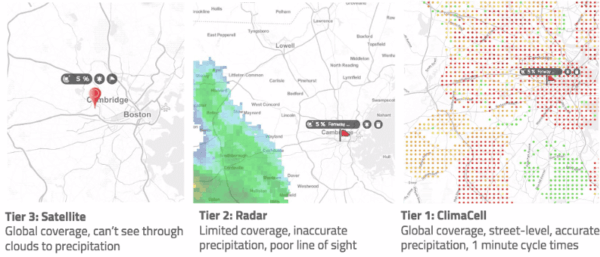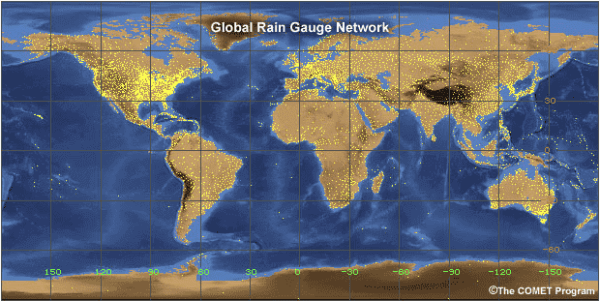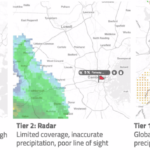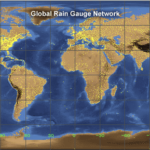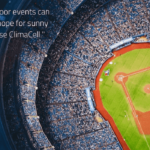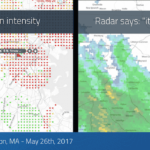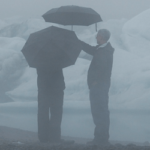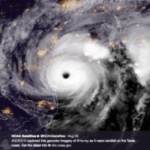Bitter cold, frosty mornings, and snow-drenched landscapes — breathtaking scenery that winter brings to the U.S. Winter carries an air of enchantment but also breeds a host of challenges businesses often grapple with.
A bitter reality that prompts the question – how can businesses across sectors mitigate severe winter weather hazards?
This guide will discuss strategies to shield your business from winter’s icy clutch and ensure seamless operation even during treacherous snowstorms.
An Overview of Severe Winter Weather Hazards
Though beautiful, winter weather brings many hazards for communities and businesses to work against. Frozen roads render transportation impossible, sudden blizzards disrupt operations, and plummeting temperatures cause equipment failure.
- Snow Hazards: Slippery sidewalks and icy roads create hazardous conditions for pedestrians and vehicles, leading to deadly accidents.
- Dangers of Blizzards: Characterized by strong winds and heavy snowfall, blizzards reduce visibility, which can halt all forms of transportation and outdoor activities. Blizzards damage power lines and cause power outages.
- Extreme Temperatures: Cold temperatures bring heavy snow and intense winds, posing health risks and causing mechanical failures, affecting productivity.
- Freezing Rain: Ice storms and rain falling onto freezing surfaces often cause black ice, creating dangerous conditions on roadways and walkways.
Understandably, these factors present considerable danger to several sectors and individual persons, exacerbating medical conditions and difficult working conditions. Both in terms of safety for outdoor workers risking their lives on sites or economic fallout due to halted production lines in industrial areas due to unstable weather patterns.
Navigating through these hazards can be daunting, and avoidable accidents and financial losses pile up each year due to lackadaisical measures taken against this powerhouse season. By delving into potential safeguards, one can avoid catastrophic consequences caused by extreme weather scenarios during winter.
Which Industries Are Most at Risk for Winter Weather Hazards?
From the expansive farmlands and the hustle and bustle of construction sites to the allure of holiday destinations and the rising sun of renewable energy, all industries face challenges as winter sets in.
Let’s examine which sectors are most exposed to winter weather hazards.
Agriculture
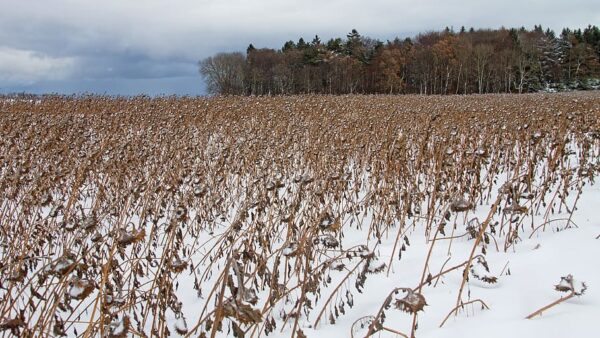
Agriculture is undoubtedly vulnerable when it comes to snow hazards and overall climate change. The freezing temperatures can wreak havoc on crops and livestock. Orchards fear early frosts that can damage budding fruits, while livestock may not survive the harsh outdoors for extended periods.
Moreover, activities such as plowing or sowing could be put on hold during extreme conditions, affecting productivity massively. Additionally, icy roads pose delivery challenges, reducing market access for farmers who must meet tightened schedules amidst worsening conditions.
Construction
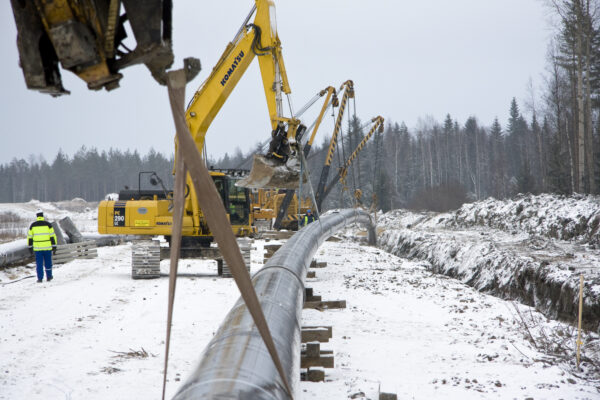
Equally affected, if not more so, is the construction industry. Working outside in cold weather construction sites introduces an array of risks, from slick equipment handling and icy scaffolding dangers to frostbite amongst workers – raising urgent concerns about safety for construction workers. These crews should be equipped with warm and dry clothing, be allowed to take breaks, and have access to emergency supplies.
The bitter cold also impacts building materials—adhesive resin doesn’t cure well in low temperatures, nor does concrete set correctly under frosty conditions. The overall pace slows considerably, leading to unexpected delays and budget overruns due to additional heating costs or extending project timelines.
Tourism
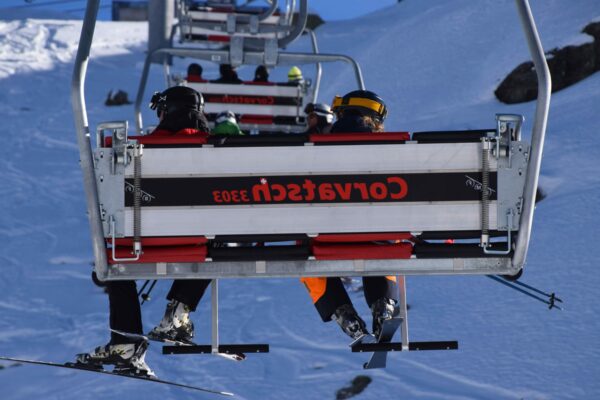
Tourism faces its share of issues during winter months. While ski resorts celebrate their high season, others significantly suffer as snow-filled pathways lead towards reduced footfall—a considerable drop from typically bustling summer crowds. Outdoor attractions virtually hibernate until brighter spring days bring renewed visitor interest—an annual test of resilience for many travel-centric businesses. Inclement weather doesn’t bode well in many parts of the world.
Transportation links become disrupted quite often, too—inaccessible roads or grounded flights may deter potential tourists, making a brutal hit on an industry where timing is everything!
Renewable Energy
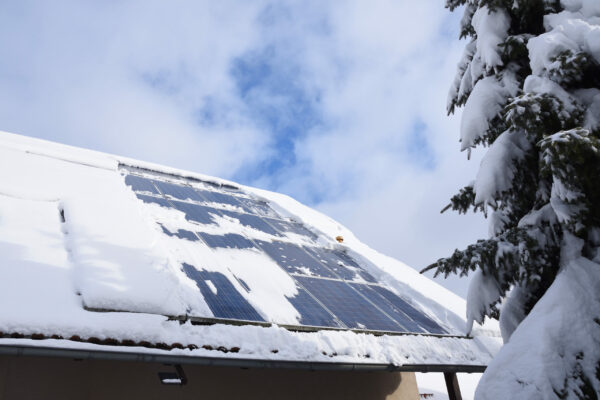
Last is the impact on our bravely emerging renewable energy sector. Solar panels, for example, see a dramatic reduction in energy production during shorter winter days—snowfall covering their surface exacerbates the issue.
Wind turbines, too, are burdened by frosty weather—ice accumulating on blades not only lowers efficiency but also poses safety hazards from potentially falling ice sheets. Maintenance of these installations becomes more challenging due to inclement winter weather conditions.
Realizing the gravity and comprehending how businesses across industries can mitigate severe winter weather hazards can bring a slough of solutions.
What Is The Potential Economic Impact of Severe Winter Weather Hazards?
As winter storms sweep through cities and towns, they leave a trail of financial distress for various businesses.
In a recent report from the Insurance Information Institute, winter storms caused nearly $6 billion in insured losses in 2022. This is the second-highest year on record for winter storm-insured losses in the last decade. They claim that the third costliest winter event since 1950 occurred in December 2022, amounting to $3.5 billion in insured losses. However, it’s important to note the impact is only sometimes ubiquitous across some sectors.
It’s clear that safety leaders must implement a solution to combat these hazardous conditions.
Burdens on Industries
Industries like agriculture, utilities, construction, and property management suffer drastically from plummeting temperatures and heavy snowfall each year. Extreme cold devastates crop yields while hindering planting schedules for the next season, which has ripple effects on a farmer’s income and national food supply.
Equally impacted is construction. Procedures lag or shut down entirely during winter weather hazards, inciting reduced profit margins and significant future costs when work resumes. For instance, frost can weaken foundations, leading to later dangerous structural issues.
Impact on Energy & Transportation Costs
Moreover, industries dependent on transportation often face increased logistics costs due to delays and traffic complications arising from hazardous winter roads. Consequently, price hikes are typical as businesses try to offset losses – an added burden end consumers bear.
All these factors culminate in a striking economic toll each year due to winter weather hazards, indicating why proactive risk mitigation efforts are not optional but survival strategies for every industry.
6 Tips for Safety Leaders to Mitigate Severe Winter Weather Hazards
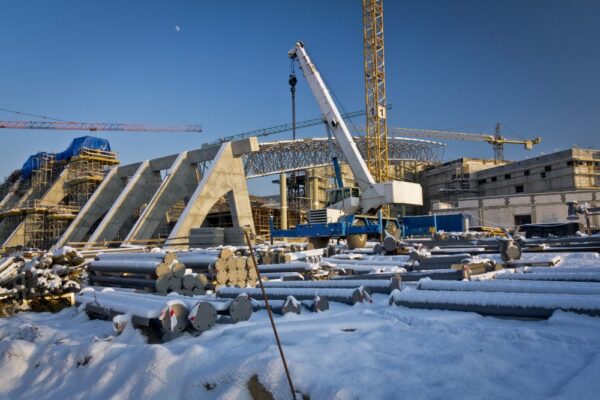
As we delve into how we can triumph over winter hazards, remember this: control is critical. Let’s look at how different industries can mitigate severe winter weather hazards.
Monitor Worksites Regularly
It pays to be hyper-aware of changing conditions in your work area that could lead to potential hazards. Snow and ice accumulation can cause structural instability, raise risks of slips and falls, and hinder operations on roads and walkways. To prevent accidents, cleanup shouldn’t only happen after a snowstorm; it should be ongoing as long as winter persists.
On another note, monotonous monitoring might seem tedious without the right tools in place. This is where weather surveillance technologies come in handy – but more on that later.
Put Away Machinery, Equipment, and Tools
Winter exposure isn’t kind to machinery or equipment, either. Cold weather can reduce efficiency in batteries, hydraulic systems, or fuel-containing machinery, potentially leading to accidents or disruptions in productivity. Having extra batteries for equipment on hand may be a good idea. So it’s prudent for everyone (especially sectors like construction and outdoor shipyards) to store their tools properly post-operation.
Ensure Adequate Heating
We can’t stress the need to keep workspaces adequately heated when battling severe winter weather conditions at work. Whether you’re an office-based business or a greenhouse farmer trying to secure year-round production, appropriate heating mechanisms are essential for comfort and productivity. Never underestimate the negative effects that a cold environment could wreak on workers’ morale and output levels!
Proper Communication
The best way to ensure weather alerts are sent to all employees on a work site is to have clear communication channels. Informing staff promptly about changes in the winter weather forecast lets them prepare accordingly – possibly even averting disasters altogether.
This step couldn’t be more critical for outdoor workers braving bitter temperatures daily, whether it be in construction or ground ops in aviation. Reiterating specific “cold weather” safety tips so they become second nature to everyone on-site should be part of the process.
Build Up Emergency Shelters
Given the unpredictability of blizzards and other winter hazards, having accessible emergency shelters could save lives. Also, consider stocking them with enough food supplies, warm clothing, or medical kits to tide anyone over a rough patch ’til help arrives. Always be ready for any situation!
Remain Alert to Weather Forecasts
Finally, vigilance about impending weather changes is invaluable in mitigating winter weather. By taking heed of NWS alerts or information from NOAA, industries can plan ahead – adapting operations as necessary to minimize harsh impacts.
Remember: The hallmark of an organization well-prepared for winter lies in its preemptive actions, not in being a reactive business.
Bonus Tip: Implement Tomorrow.io’s Weather Intelligence Software
Adopting new technologies often provides an edge in the constant battle against severe winter weather hazards. While NOAA and NWS may provide timely alerts with changes in forecast weather conditions, understanding how to utilize those to your businesses’ advantage is half the battle.
Weather intelligence is an advanced technology that can serve as your business’s meteorologist and insights analyst in one.
Tomorrow.io is the world’s leading weather intelligence and climate adaptation platform.
Supercharged by next-generation space technology, cutting-edge generative AI, and proprietary modeling capabilities, global leaders, including JetBlue, Fox Sports, The United States Air Force, Ford, and Uber, rely on Tomorrow.io to solve their weather and climate-related challenges.
From innovative early warning systems to actionable insights, organizations can predict impact, mitigate risk, and ensure operational resilience with Tomorrow.io.
But how exactly does this wonder of modern tech facilitate your preparation for harsh winters?
- Proactive Planning: Being PROACTIVE is key when mitigating against weather. Weather intelligence software enables you to access detailed forecasts in advance. With this information on hand, planning measures against snow and other winter hazards becomes far simpler and more effective.
- Resource Optimization: Through efficient scheduling backed by accurate predictions, businesses can minimize downtime caused by severe weather conditions – a functionality significantly crucial in fields like construction in cold weather or agricultural activities prone to cold weather hazards at work.
- Risk Assessment: Armed with precise projections provided by the system, companies gain an invaluable tool for hazard identification and risk assessment specific to their location or operational areas.
- Real-time Monitoring & Alerts: Be it high winds alerts or incoming storm forecasts, stay aware of real-time tracking features coupled with automated alert systems issuing timely notifications about impending dangers.
- Business Insights: Weather intelligence connects weather alerts to business impact. For example, allowing trucking companies to be aware of potential blowovers due to severe weather or letting airlines know the best time for plane de-icing.
Embracing innovation should always go hand-in-hand with traditional safety measures when developing strategies for combating adverse weather conditions such as those offered up by wintertime, which integrates seamlessly into existing protocols, ensuring business continuity despite Mother Nature’s icy curve balls.
Remember, winter weather hazards may not be fully avoidable, but they certainly can be managed to reduce impact with the right technology.
Benefits of Implementing Weather Intelligence for Winter Weather Hazards
Weather intelligence, mainly when dealing with winter weather hazards, has become a crucial asset across many industries. It serves as a game-changer in how businesses navigate the challenges of severe winter climates.
Proactive Decision Making
We’ve moved past merely reacting to weather conditions; it is now possible to plan intelligently ahead with predictive insights from weather intelligence. This aspect allows organizations to anticipate harsh winter conditions and make informed decisions that ensure continuous operations and protect industry assets.
Enhanced Safety Protocols
Harnessing accurate, real-time, or forecasted data enhances safety protocols for individuals working in areas vulnerable to extreme cold and snow hazards. Governmental agencies such as the National Oceanic Atmospheric Administration (NOAA) or NWS have equipped their winter weather forecast sections with information that can serve this purpose – mitigating the potential impact of severe winters on human life.
Reduction in Economic Impact
Apart from employees’ safety concerns during harsh winters, industries face substantial financial loss due to interrupted operations and damaged infrastructure. Companies can drastically reduce these potential losses by implementing effective weather intelligence systems coupled with firm emergency strategies.
Optimization of Operations
Through accurate forecasting methods embedded within sophisticated trackers, logistics-based enterprises can optimize their operations even under difficult circumstances like blizzards or severe snowfall events. It enables efficient route planning and scheduling practices that question traditional business models while embracing innovation in cold-weather construction.
On the whole, resorting to advanced techniques such as leveraging weather intelligence software opens up new doors not just for survival but prosperity amidst extreme winter conditions. It transforms ‘how different industries can mitigate severe winter weather hazards’ from just an idea into manageable action steps – all focused on resilience and future growth prospects.
Conclusion
As we welcome the winter season, severe weather hazards become more imminent. Meaningful preparation against forecast weather conditions, however, can significantly mitigate the severity of these high-impact weather events.
Weather Intelligence from Tomorrow.io is the solution to combat winter weather and adapt to new climate norms. Tomorrow.io transcends basic and typical forecasting and delivers far more precise insights about predicted conditions.
Addressing winter safety needs is not a one-off task but an ongoing commitment. As companies improve their understanding of what constitutes their unique vulnerabilities against winter, they stand better poised not merely to respond but proactively thwart ominous threats posed by chilly climatic tantrums.
Interested in learning what weather intelligence can do for your industry?

